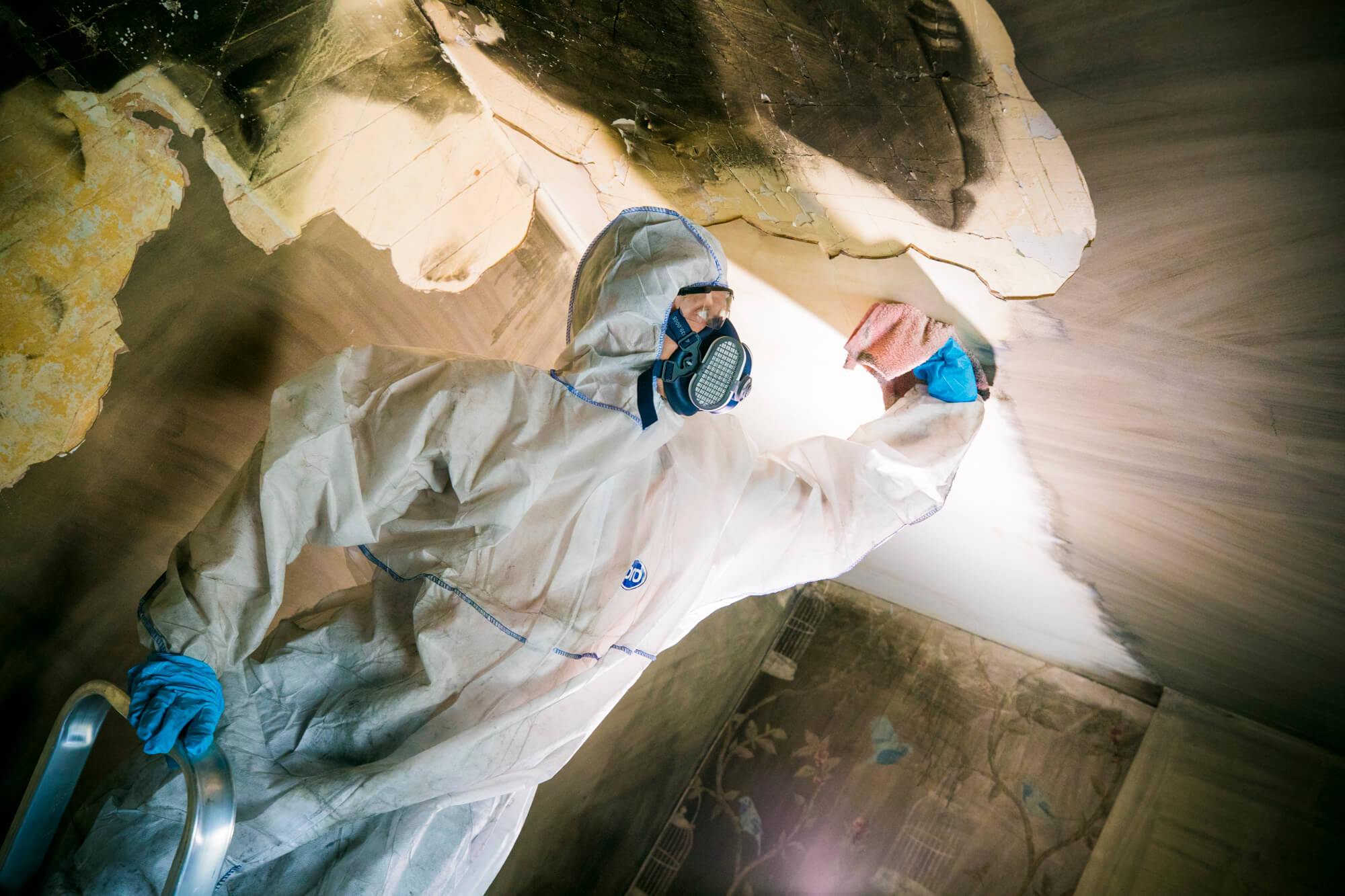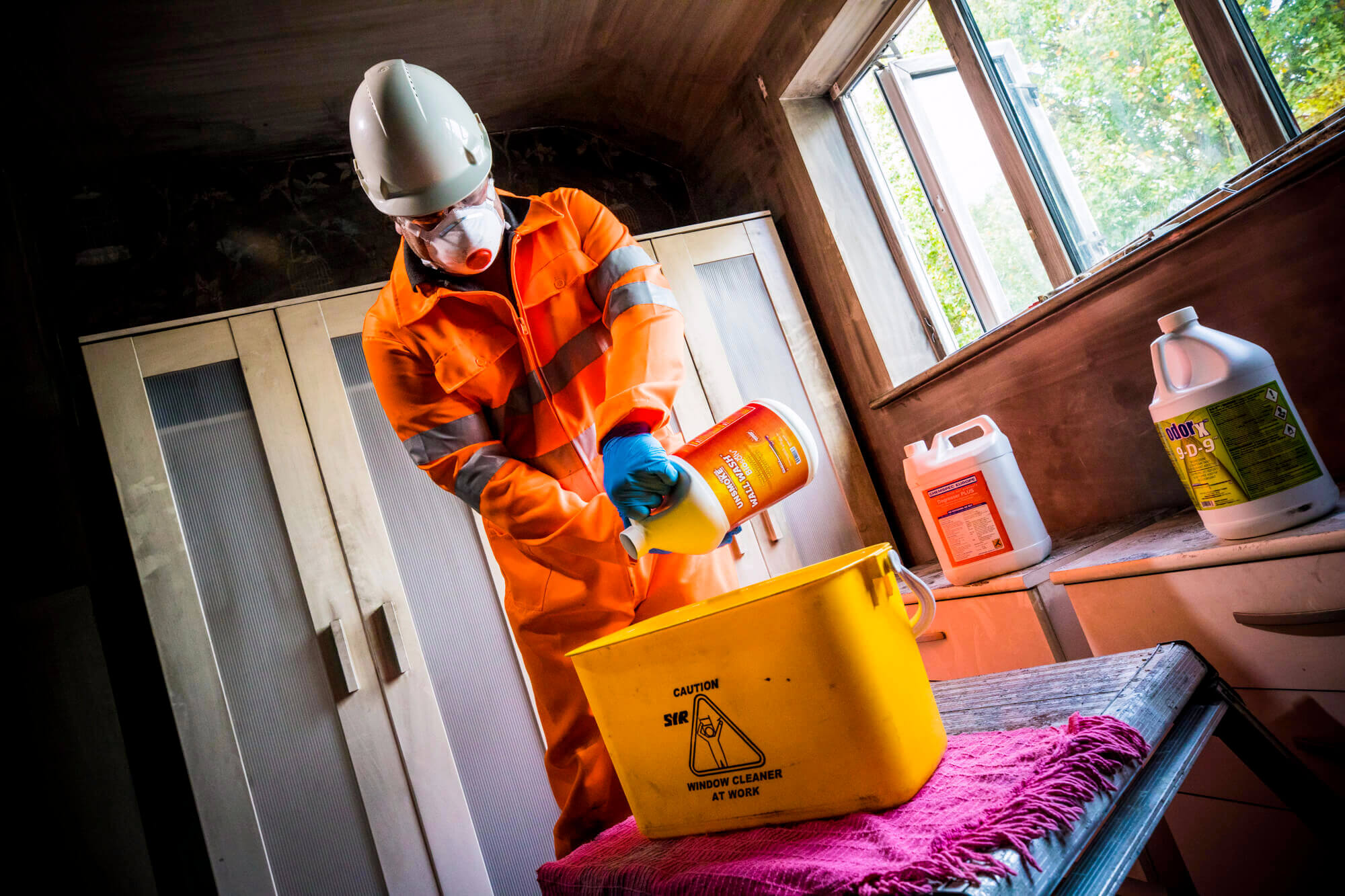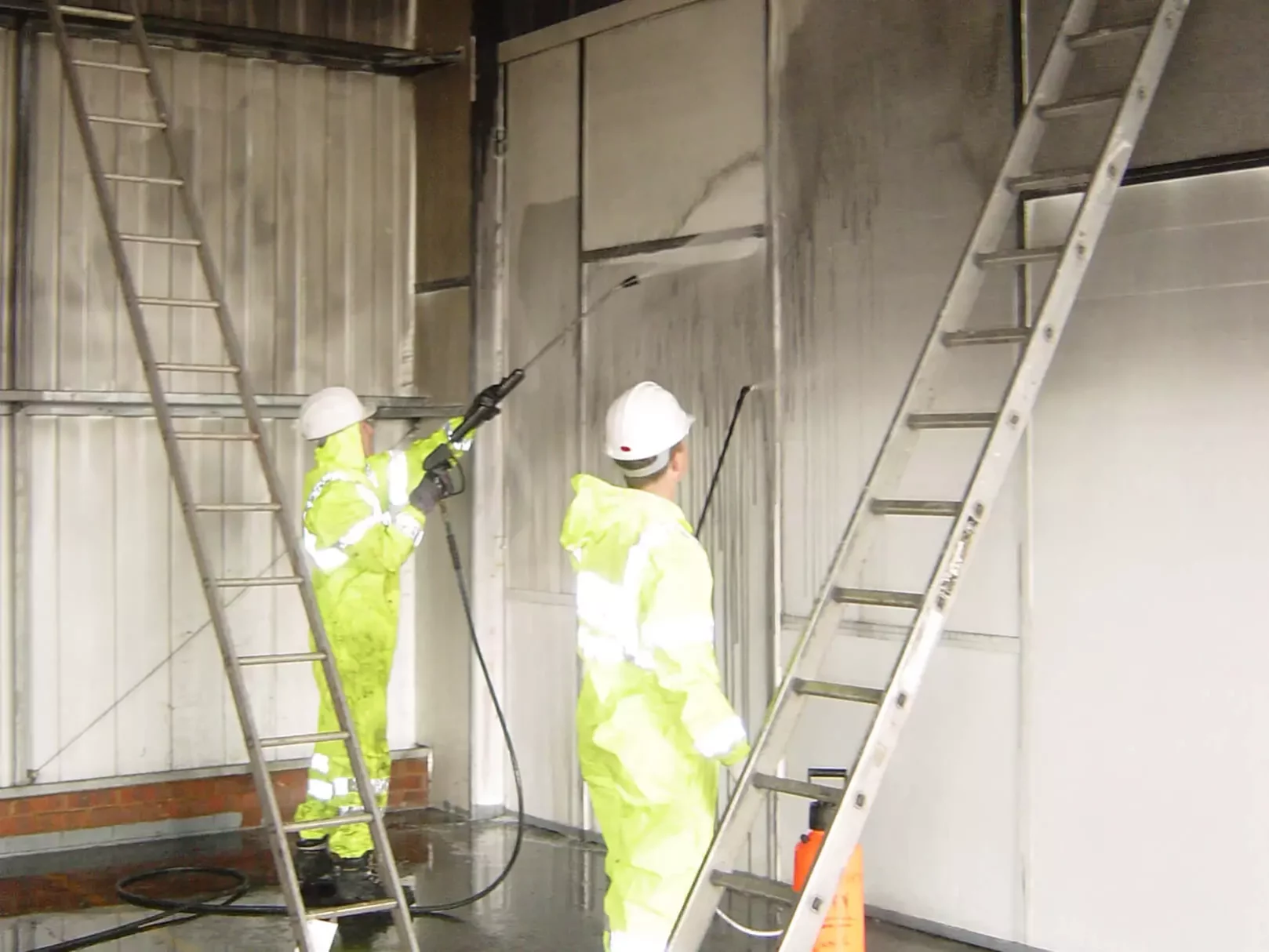Have you ever wondered how to clean up after a fire? Surely it can’t be that hard.
Can it?
Actually, yes.
Fire restoration is a complicated process and if done incorrectly, or there has been too long a delay in getting started, more damage can be done. Sometimes that damage is irreparable. And sometimes that damage causes costs to quickly sky-rocket.
In the unfortunate event that you ever experience a fire, it’s important to know what to do and what’s involved in the restoration process – whether you want to tackle the task yourself, or decide that you need to hire the help of professionals.
Below, we list the main things you should consider, but this is by no means an exhaustive list.
We would always recommend that you seek professional advice before attempting a fire damage cleanup yourself.
Water Damage and Mould
Wait, what? Water damage? Mould? Probably not the first things that spring to mind when thinking of fire damage.
It’s easy to overlook what affect the actual process of putting out a fire will have on a building, and instead concentrate on the fire damage itself.
But it’s important to understand that a building can become absolutely saturated. Remember, the damping down phase of extinguishing a fire can last several hours, not to mention the amount of water used putting the fire out in the first place.
If the water damage cleanup isn’t addressed quickly, mould can start to grow deep within the fibres of fabrics and furniture in as little as 24 hours. And the mould will continue to colonise if the material is not effectively dried out.
Before even starting on the fire damage, a professional restoration company will first extract any standing water and will then install commercial dehumidifiers to dry out the building.
If attempting this yourself, remember that time really is of the essence here and be aware of the time it will take without access to specialist equipment. The longer it takes, the more damage will be done to your possessions, and the more chance mould will have had to begin growing; an additional problem that you do not want.
If mould has started to grow, read our blog post on removing mould for some helpful tips.
Soot Residue

It might surprise you to learn that despite whether you attempt the clean yourself or call in the professionals, there’s often some staining that remains from soot damage. But to achieve the best possible results and to avoid further or irreparable damage, you need to counter in the following points.
Smoke residue is not a simple substance. Formed by the combination of chemicals, gasses, and the particles released through the burning of materials caught in a fire, there is not a “one size fits all approach” to its removal.
As a fire progresses, different forms of smoke and soot are generated – each creating and depositing their own unique residue. The materials and speed at which they burn play a major role in determining the types of residue created.
Smoke residues can take a variety of forms, which can include visible and invisible, dry, wet, and sticky. These can easily smear on surfaces. Different residues stick to the affected surfaces with varying degrees of intensity, and as such, require the application of a variety of decontamination methods for their removal.
The procedure used to remove the residue is determined by the type of residue present and the surface from which it is being cleaned.
In some cases, decontamination can be relatively straightforward, such as HEPA vacuuming and dry wiping. And it can be extremely complex in others, requiring specialist restoration agents. In the event of severe bonding, the methods used to remove residues can adversely affect the surface being cleaned.
If you attempt the wrong decontamination method against the wrong type of residue, not only will it be ineffective, but you could make the damage worse. Soot and smoke easily smear and they can be “ground in” to porous material.
Failure to completely remove the soot can also lead to further corrosion. Soot and ash are both acidic and will continue to corrode vulnerable surfaces if not completely removed.
If you do attempt soot removal yourself, ensure that you do your research and seek advice on removing the type of residue present. Remember, there could be more than one type created by the same fire.
Corrosion
It should come as no surprise that there are various methods for cleaning after a fire, some of which require the use of different chemicals. However, do you know which ones to use in what situation?
As said above, there is no one size fits all approach and depending on the type of residue and surface being cleaned, will depend on the chemicals used and application method.
This kind of knowledge takes training and years of experience – this is one of the key, invaluable benefits of hiring in the professionals over attempting the clean yourself.
Ash and soot are both acidic, and if not fully removed from susceptible surfaces, they will continue to corrode long after the fire has been doused.
But that’s not all you need to worry about. Using harsh chemicals on particular surfaces also means that you need to ensure their entire removal following completion of the restoration process. If you don’t, they too can make delicate surfaces pit, rust or corrode; leaving an unbalanced pH level on a surface can cause unexpected adverse effects.
Odour Removal
Perhaps one of the hardest parts of a fire cleanup is odour removal. And it’s not surprising why.
During a fire, the pores of a substrate are heated, which causes them to open – just like the pores on your skin do during a hot shower. During this time, smoke and soot particles are able to penetrate the surface and when the building cools, the pores close, trapping the odour.
Without the resources to be able to reheat the building to make the pores reopen, and then neutralise the particles, odour removal can seem near impossible.
There is little available on the domestic market which is capable of eradicating smoke and soot odour – most will merely temporarily mask the smell.
Even if you’re happy with the smell being masked, the problem lies when pores begin to open during a hot summer’s day. Any trapped particles are then free to roam and risk recontaminating previously cleaned areas and surfaces – fabrics and soft furnishings are at particular risk of re-contamination.
Then the entire cycle begins again.
The Risks and Dangers

A professional restoration company will have access to all appropriate PPE (Personal Protective Equipment), including respiratory masks.
Why is this important?
Because ash and soot particles are tiny – even smaller than mould and dust. They are so small, that you need a microscope to see them.
This presents a health risk to anyone who enters a fire damaged building without the correct PPE. Because of their size, ash and soot particles can reach the lower section of your lungs if inhaled, causing a range of respiratory problems.
If not completely removed, ash and soot can present health problems years after the original fire. And because they are invisible to the naked eye, you have to be confident in your cleaning approach – something that a professional fire restoration company is used to dealing with.
It is widely believed that ash and soot are carcinogenic, and it’s important to note that soot residue can also contain other dangerous chemicals, toxins and plastics which also pose their own health risks.
Final Thoughts
A fire restoration clean can be challenging in terms of both timescale and complexity.
Before attempting a clean yourself, ensure that you are well aware of the risks and the likelihood of making the situation worse far outweighs the chances of being successful.
While hiring a professional restoration company can seem like a costly investment, it is nothing compared to the costs you can incur should you attempt the clean yourself and fail. And if not addressed in a suitable timeframe, the damage can soon start racking up additional costs.
When looking for a restoration company, make sure that they are experienced with fire restoration and not just general building work – the processes used and knowledge required vary significantly.
If possible, also ensure that the company has BDMA accredited staff and technicians. The BDMA is the the certifying body for damage management professionals. They ensure the establishment and maintenance of standardised, high quality codes of practice within the damage management industry, so you can rest assured that you’re in safe hands.
At Ideal Response, we have numerous BDMA accredited staff, including technicians, who are also highly trained in all aspects of water and fire damage. And as we also appreciate that a quick response is critical in minimising damage, costs and disruption, we offer a 24 hour a day, 7 day a week service and we aim to be onsite within 2 hours of receiving your call.
Contact us today for more information and advice, or to receive your free estimate on fire damage restoration.



